For a quick harvest when growing tomatoes, greenhouses or greenhouses are often used. Such conditions facilitate the growing process, but oblige the gardener to monitor the favorable microclimate in the shelter, to regulate humidity and temperature. Sharp fluctuations or deviations from the norm of these values slow down the growth of plants or lead to death. Especially dangerous for tomatoes heat in the greenhouse. Therefore, it is important to protect the bushes from overheating.
Content
Danger of overheating for tomatoes
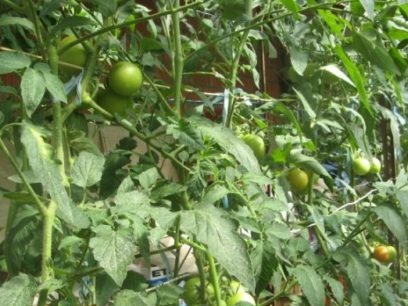 Tomatoes were brought to Europe from South America, so these plants have a positive attitude to high temperature. But this does not mean that you do not need to monitor the temperature in the greenhouse. The minimum threshold for active growth of tomato is +10 degrees. At lower temperatures, plants are not able to get nutrients and absorb them.
Tomatoes were brought to Europe from South America, so these plants have a positive attitude to high temperature. But this does not mean that you do not need to monitor the temperature in the greenhouse. The minimum threshold for active growth of tomato is +10 degrees. At lower temperatures, plants are not able to get nutrients and absorb them.
For the good development of tomatoes, it is important that the soil is heated to a temperature of +14 to +25 degrees. In this case, the air temperature should be constant. Abrupt changes in day and night values are detrimental to this culture. To comply with these requirements, use ventilation in the daytime.
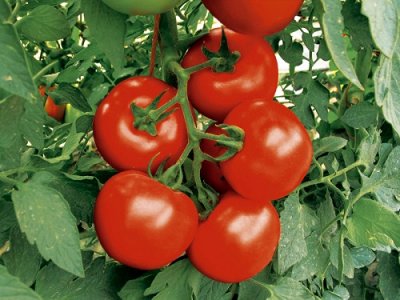 You may be interested in:
You may be interested in:To control the temperature regime, thermostats are installed at different levels inside the greenhouse or greenhouse:
- flush with the ground;
- under the roof of the greenhouse;
- at a height of 1.2 m.
Extremely high temperature provokes shock in plants. They stop in growth and development, giving all their strength to breathing. Overheating reduces the rate of photosynthesis and deprives pollen of the ability to pollute. As a result, ovaries on tomatoes are not formed.
The green part of tomato bushes burns from heat. Leaves become lethargic and pale, drooping lifelessly. If the root system and the stem suffer from overheating, the seedlings die. When burning individual leaves, they are torn off. With a large number of affected foliage, removal is performed in several stages, so that the plant does not receive additional stress. After the restoration of the affected plants, fruiting is postponed for several weeks. Therefore, it is better not to allow such a situation.
Protecting tomatoes in a greenhouse from overheating
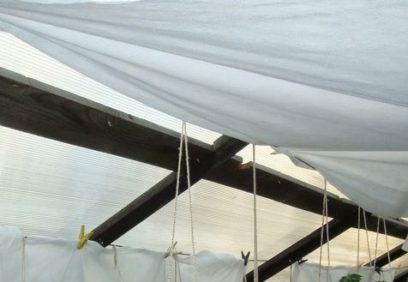 The negative effect of overheating on the growth and development of greenhouse tomatoes becomes noticeable very quickly. After 5 hours at a high temperature, the foliage withers and loses its normal color. Then the flowers and ovaries begin to fade and begin to fall. You need to start protecting plants from overheating immediately after the foliage has wilted.
The negative effect of overheating on the growth and development of greenhouse tomatoes becomes noticeable very quickly. After 5 hours at a high temperature, the foliage withers and loses its normal color. Then the flowers and ovaries begin to fade and begin to fall. You need to start protecting plants from overheating immediately after the foliage has wilted.
Moisture retention
If the air in the greenhouse warms to maximum values, it is important to maintain a high level of soil moisture to protect plants. At the same time, take into account that tomatoes do not tolerate frequent and plentiful irrigation. This method of watering erodes the surface layer of the soil, exposing the root system and washing out the nutrients necessary for the growth of bushes.
The main task of the gardener to save plants is to reduce the amount of moisture evaporation. To do this, the soil is mulched with mowed grass or hay harvested in advance. As a mulch, thick paper or cover material purchased in a gardener shop is suitable.
To preserve moisture in the soil, loosening is used:
- Bushes spud to a maximum depth of 5 cm, so as not to affect the root system. In this case, moisture will remain in the air and in the soil.
- In the sultry period, loosening helps protect the roots from overheating.
- This procedure stimulates lateral branching of the root system. This improves the quality of the crop in the future.
Shading
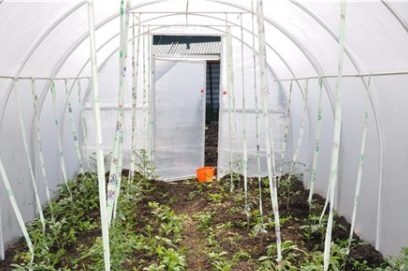 Gardeners use improvised means to create shadows. If there is free space around the greenhouse, you can plant plants. However, their height should not be too large so that they do not block the access of sunlight. It is recommended to think over the location of the greenhouse in advance and initially build it in the vicinity of available suitable plantings. It is not recommended to put a greenhouse next to fruit trees. They create a dense shadow and block the access of sunlight. An accidentally broken branch or a fallen fruit can damage the greenhouse cover.
Gardeners use improvised means to create shadows. If there is free space around the greenhouse, you can plant plants. However, their height should not be too large so that they do not block the access of sunlight. It is recommended to think over the location of the greenhouse in advance and initially build it in the vicinity of available suitable plantings. It is not recommended to put a greenhouse next to fruit trees. They create a dense shadow and block the access of sunlight. An accidentally broken branch or a fallen fruit can damage the greenhouse cover.
Another way to shade plants in a greenhouse or greenhouse is to spray the roof with chalk solution. Moisture evaporates quickly, and a thin layer of chalk remains on the surface, protecting the plantings from the scorching heat. At the same time, chalk dust is easy to wash off. It is better not to use paint for this purpose, since removing it will be problematic. You can use cut branches of trees as shelter by spreading them on the roof of the greenhouse.
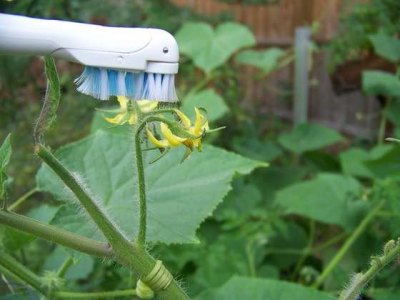 You may be interested in:
You may be interested in:Large designs are conveniently shaded with a special mesh. Such shelters, depending on the density, filter from 25 to 75% of sunlight. Also used for shading is a special easily washable paint that covers the roof of the greenhouse. Convenient design - curtains with light sensors. When the temperature rises above a predetermined level, they automatically close the greenhouse.
Ventilation
The easiest way to adjust the temperature inside the shelter is to periodically ventilate. In the simplest greenhouses with a polyethylene coating, a side sash is left for this purpose. For ventilation, it is opened during hours of maximum temperature increase. Then the plants will not overheat. If the greenhouse is large, make several side windows with the same interval. Then stale hot air will not stagnate inside the structure.
Natural ventilation is not without drawbacks:
- an open leaf allows insects and birds to fly inside;
- ventilation does not protect plants from ultraviolet radiation.
In large greenhouses where plants are grown for sale, it is convenient to use forced ventilation. To do this, install hoods and fans, equip the room with temperature sensors. At the right time, they turn on artificial ventilation. For a home greenhouse, installing such a system is an unjustified waste. In this case, the usual window leaves are enough.
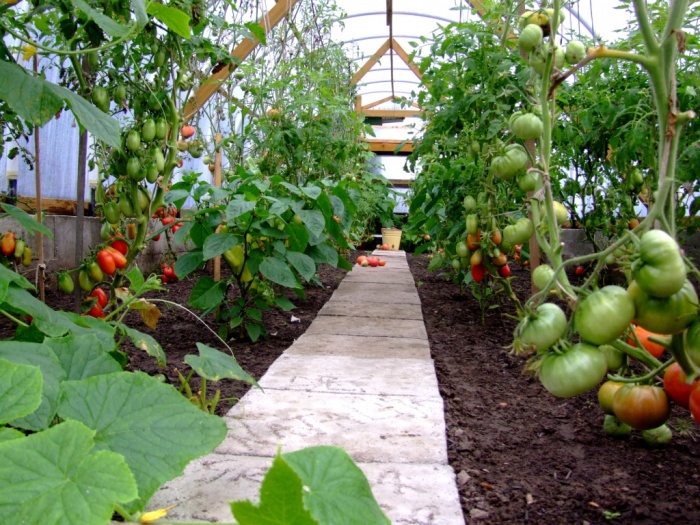 You may be interested in:
You may be interested in:For a high yield of greenhouse tomatoes, it is important to observe the temperature regime.Before planting seedlings, this is taken into account and create conditions for good ventilation, protect plants from the active sun.




 Low-growing tomatoes, without pinching: 5 of the most delicious varieties
Low-growing tomatoes, without pinching: 5 of the most delicious varieties Why tomato seedlings grow poorly
Why tomato seedlings grow poorly We grow a tomato in a shell
We grow a tomato in a shell Growing tomatoes without watering according to the method of Kazarin
Growing tomatoes without watering according to the method of Kazarin